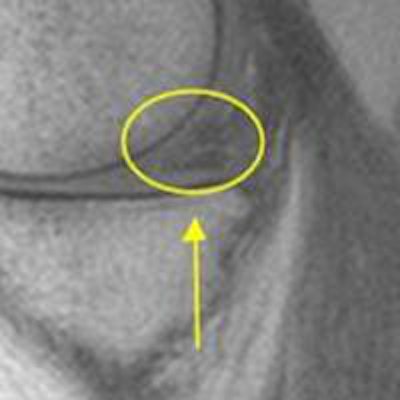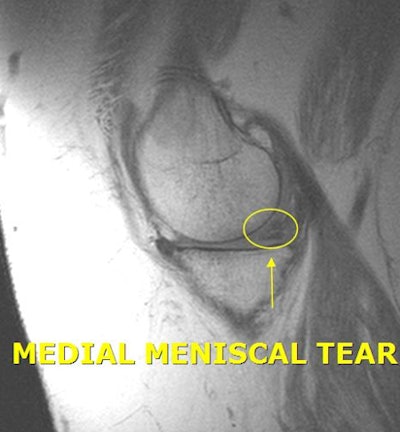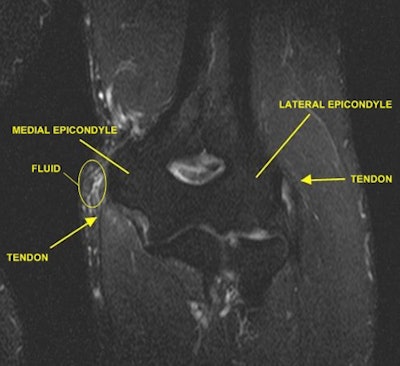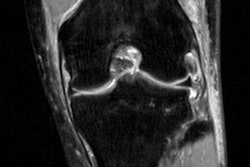
Ardent sports fans can easily explain a blitz, play-action fake, suicide squeeze, backcourt violation, and icing. What many of them can't do is describe a torn anterior cruciate ligament (ACL), hip flexor problems, or plantar fasciitis.
That's where Dr. Anand Lalaji can help. The founder and chief medical officer of the Radiology Group in Atlanta has created a new website, InsideInjuries.com, to show clinical image examples of athletes' injuries and demonstrate the mechanics behind them.
"We always hear about these injuries, but we really have no idea what they look like," Lalaji said. "We can only associate to them by, 'Yes, I know that is a knee.' If I can give people a snapshot or a little snippet of what [an injury] looks like and what normal looks like, the next time they hear about that injury they automatically can visualize [it]. "
 Dr. Anand Lalaji, creator of InsideInjuries.com.
Dr. Anand Lalaji, creator of InsideInjuries.com.
One of Lalaji's motivations for creating the website is to show people what radiologists actually do, versus how they are portrayed on TV or in the movies, "where everyone except the radiologist is interpreting the film," he said. "As a radiologist, it seems like we are always stuck in a dark room and don't talk to human beings. So I wanted to connect the radiologist with the consumer."
Another goal is to educate the public about radiology by using athletes' injuries as the vehicle. Lalaji completed a musculoskeletal fellowship at Wake Forest University Baptist Hospital in 2004, so, as he says, "Sports injuries are near and dear to my heart."
Weekend warriors
He also has friends who are "weekend warriors," who occasionally tear their ACL or injure their Achilles' tendon. Often, they know an athlete who has the same condition they do. "Now, when it happens to them, they know what the injury looks like," Lalaji said. "That is actually a great comfort to them. For people who are not in the field of medicine, there can be great concern and apprehension."
The site launched at the beginning of September and in its first month garnered approximately 1,000 followers on Facebook; it can also be followed on Twitter and Instagram. Over the past six weeks, the site has had as many as 1,000 hits per day, with fantasy football fanatics among the most loyal followers, Lalaji said.
The notoriety of an athlete and the nature of his or her injury also influenced traffic on the site during the first month. When InsideInjuries.com posted an image illustrating the type of forearm injury experienced by New England Patriots' tight end Rob Gronkowski, the website had 2,000 hits that day.
"Almost 99% of the traffic to our website is coming from Facebook, because people click on the picture on Facebook and they can look at the images at full size," he said. "And almost 80% of [the hits] come from mobile phones."
The site is also searchable by condition; for example, a visitor can search for ankle sprains, and the site will categorize all the athletes who have experienced an ankle sprain. The visitor can also view injuries associated with that condition.
 This MRI from InsideInjuries.com shows the location of a mensical tear. All images courtesy of Dr. Anand Lalaji.
This MRI from InsideInjuries.com shows the location of a mensical tear. All images courtesy of Dr. Anand Lalaji. An MRI of an elbow indicates normal landmarks (yellow arrows).
An MRI of an elbow indicates normal landmarks (yellow arrows).HIPAA restrictions
Just to be clear, the clinical images posted on the website are not of the athletes. If the pictures were the athletes' actual images, it would be an obvious HIPAA violation. In fact, InsideInjuries.com specifically states that the images are only examples of the injury the athlete incurred, based on media reports.
"It is sort of a general diagnosis of the injury," Lalaji said. "It may be something like a hip sprain, which could be a hip flexor or something else. There are two or three different possibilities" posted on the site for an athlete's reported injury.
While the posted images are not detailed enough to be used as an educational tool for current or would-be radiologists, the site might be useful for an internist, family practitioner, or other healthcare specialist who is not in the field of imaging, Lalaji said.
"They may not know what some of these injuries look like," he added. "I think people outside of the field of radiology or orthopedic surgery might benefit from the site as a teaching tool."
He also speculated that the site could be used by a general practitioner, orthopedic or podiatrist practice, or rehabilitation facility for a physician or healthcare provider to show the patient an example of his or her injury.
"There are a lot of outlets where we can go in the future," Lalaji said. "The key thing is to just keep it simple and provide visual examples of all of these injuries that we see. When people can associate an image with what that [injury] looks like, they can tell their friends about it and they can say, 'Yeah, I know what that looks like.' "



.fFmgij6Hin.png?auto=compress%2Cformat&fit=crop&h=100&q=70&w=100)




.fFmgij6Hin.png?auto=compress%2Cformat&fit=crop&h=167&q=70&w=250)











